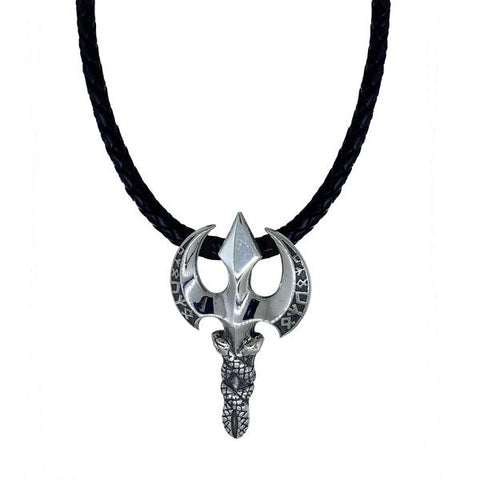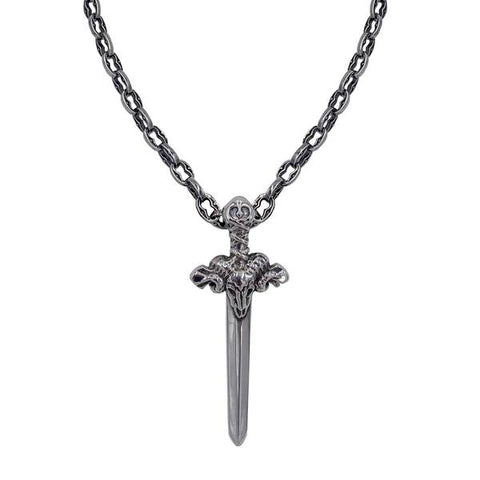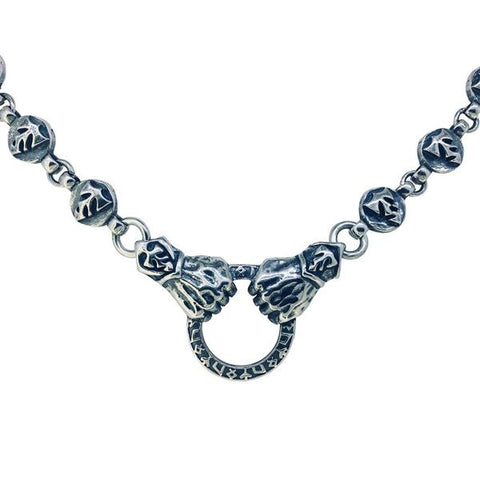The History of Viking Jewelry
Jewelry isn’t necessarily the first thing that comes to mind when you think of the Vikings. Instead, you probably have mental images of strong, bearded men running around with spears and shields. But like most cultures around the world, jewelry absolutely played a role in Viking culture. Keep scrolling to learn more about Viking jewelry, its history, meaning, crafting, and more.
Where Does Our Knowledge of Viking Jewelry Even Come From?
The Vikings lived from approximately 700 AD to 1100, traveling by boat from Scandinavia (present-day Denmark, Norway, and Sweden) to as far as North America to the west and Central Asia to the east. The Battle of Stamford Bridge is generally accepted as the end of the Vikings. During this battle, the Norwegian king was killed while trying to reclaim part of England. This would be the last significant Viking incursion into Europe. The raids slowed down but the Vikings weren’t conquered. Instead, they simply came to be viewed as Danes, Swedes, Norwegians, and so on.
So, how do we know anything about their fashion habits?

It comes mainly from what researchers and historians have found in burial sites. It turns out that Vikings had a habit of hoarding. They would hide and bury their valuable items to keep them safe from invaders. Plus, because they were travelers, they’d never stay in one place for too long and had the tendency to leave certain things behind as they traveled from one place to the next.
Furthermore, they’d bury these items with the deceased, because they believed that the dead needed money in order to live the afterlife that they wanted.
It’s through the unearthing of these valuables that we’ve come to understand a bit more about not just the Vikings’ jewelry but the people themselves. And it turns out there’s a lot more to them than some of us might have thought.

Viking Jewelry: Creations at the Hands of Skilled Artisans
While history might not be talking about this much, the Norse people weren’t just skilled fighters. They were incredibly skilled metalworkers and woodworkers. Like we do today, they wore jewelry as accessories and embellishments to their attire. The pieces they crafted ranged from simple and modest to extravagant and eye-catching. Women loved using brooches to help hold their clothes together, and their pieces were often quite ornate and fashionable. Men, on the other hand, wore brooches that were less detailed.
You could also find the Vikings wearing necklaces, and especially rings for the men. Warriors even used jewelry to decorate their weapons. Vikings could often be found wearing neck rings, armbands, and bracelets.

Because jewelry was often used as a symbol of wealth, the fancier the piece, the richer the individual wearing it.
Vikings also liked pendants, with the most popular seemingly being Mjolnir — or what you might better know as Thor’s hammer. Thor was known as the god of thunder, and his hammer had the power of lightning. The Vikings held his hammer as a sort of religious amulet.
The Tree of Life — known as Yggdrasil — came in a close second. It represented the complete circle of life, death, and rebirth, and it was viewed as the center of the cosmos and the connection between the Nine Worlds.
Using Beads in Viking Jewelry
Archaeological findings have unearthed Viking jewelry made with beads, but what’s interesting is that although beads can be purchased for very cheap today, they appear to have been very rare back then.
Viking beads were most commonly made of amber or glass, and the majority of their jewelry never had more than three beads. There are a couple of potential explanations for this. Maybe they were incredibly precious and only possessed by the very wealthy. Or, they might have symbolized a certain life achievement or age. Whatever the case may be, historians are almost certain that beaded jewelry was not commonplace.
While Viking jewelry was undoubtedly a fashion statement as well as a symbol of wealth and status, it also had another very important role. The Vikings used jewelry as a form of currency.
Using Viking Jewelry in Trade and Battle
The Vikings took great care to craft their jewelry mostly out of precious metals — although they also utilized beads, rocks, and stones. Most commonly, they used silver and bronze, reserving gold jewelry for the elite. If a piece was more valuable than what they were trying to purchase, they’d break it down into smaller pieces. In fact, they had a name for this: hack silver. When making purchases, they’d literally break off pieces of the jewelry that they were wearing as payment.

Jewelry wasn’t only used in trade and business transactions, though. The Vikings also used it when forming alliances by giving and exchanging rings with lords and warriors. It served as a bond between people, a type of commitment.
All of this makes it clear that Viking jewelry wasn’t just aesthetic. It was also functional.
What history has revealed is a group of people with a culture and set of traditions deeper and more meaningful than we might have anticipated. Viking jewelry tells us that the Norse people were not just artistic and skilled but also valued the afterlife as well as the bonds and relationships we create in this life.
While the Vikings may no longer exist today as they were known back then, their culture and traditions live on.
Shop Tribal Son’s collections today.
